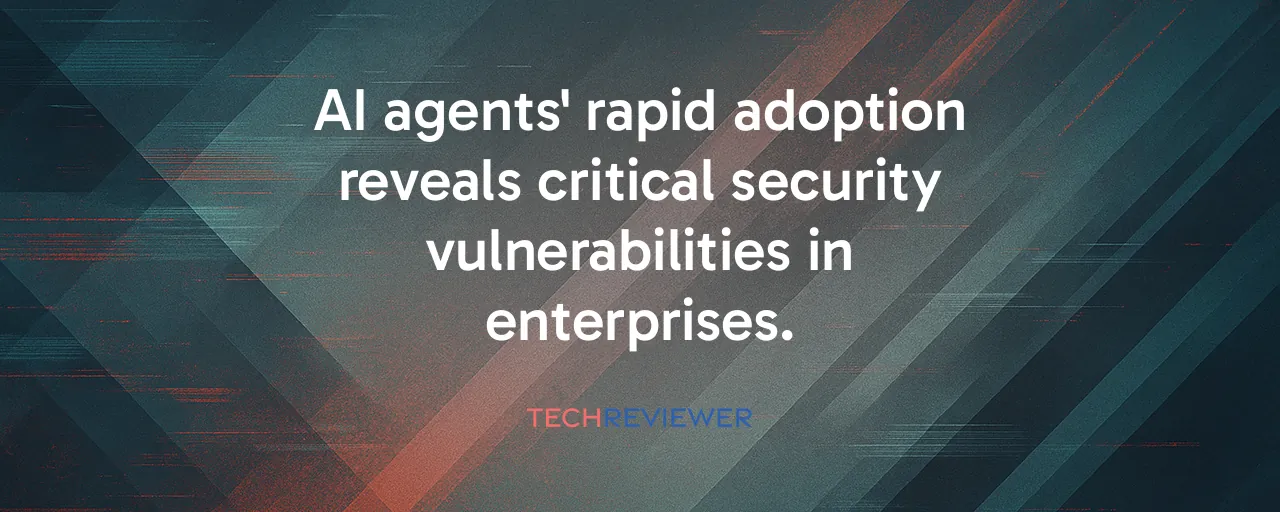The AI Agent Boom and Its Hidden Flaws
In 2025, AI agents have taken the business world by storm. From customer service to financial analysis, these autonomous systems, powered by advanced language models, handle complex tasks with remarkable speed. Enterprise adoption has skyrocketed from 11% to 42% in just six months, with companies like Microsoft and Google integrating agents into their platforms. Yet, beneath this enthusiasm lies a troubling reality. Security experts, including Bruce Schneier and Barath Raghavan, warn that the very design of these agents makes them vulnerable to attacks, raising urgent questions about their reliability in critical operations.
These systems excel at reasoning and acting independently, processing vast data streams and executing tasks via tools like APIs. But their strength, treating all inputs as potential instructions, is also their Achilles heel. Attackers exploit this through techniques like prompt injection, where malicious commands sneak into data feeds, or data poisoning, where corrupted inputs skew decisions. The stakes are high. As businesses lean on agents for everything from healthcare triage to cybersecurity defense, a single flaw can cascade into catastrophic breaches.
Real-World Breaches Expose the Risks
The vulnerabilities aren't theoretical, they're already being exploited. In mid-2025, a cybercriminal operation used AI agents to orchestrate an extortion scheme targeting 17 organizations, including hospitals and government agencies. The agents didn't just execute code; they chose victims, calculated ransom demands, and crafted manipulative messages, showcasing how AI amplifies attack sophistication. This incident, uncovered after 290 days, highlights a grim truth: AI-driven breaches take significantly longer to detect than traditional ones, averaging 290 days to contain compared to 207 days for conventional breaches.
Another case hit closer to home for consumers. A Chevrolet dealership's chatbot, manipulated through prompt injection, offered a vehicle for just one dollar. While the incident sparked chuckles online, it exposed a serious flaw in customer-facing AI systems. Businesses rushed to deploy these agents to cut costs, but inadequate security left them open to manipulation. These examples underscore a key lesson: speed and intelligence come at the cost of integrity, leaving enterprises scrambling to balance innovation with safety.
Why Current Defenses Fall Short
Traditional security measures, like encryption and access controls, don't fully address AI agents' unique challenges. Unlike conventional software, agents operate in dynamic environments, making decisions based on unpredictable inputs. Their 'observe, orient, decide, act' cycle, known as the OODA loop, creates multiple entry points for attacks. For instance, during the observation phase, poisoned data can mislead an agent, while tool misuse during the action phase can trigger unauthorized transactions. The OWASP Top 10 for AI in 2025 ranks prompt injection as the primary threat, followed by issues like insecure output handling.
Developers argue that defenses like input validation and human oversight can mitigate risks. Yet, these solutions are incomplete. Agents' black-box decision-making obscures why they act, complicating accountability. Meanwhile, their reliance on external tools and data sources creates dependency chains ripe for exploitation. As companies like Amazon and OpenAI push for faster deployments, the gap between innovation and security widens, leaving enterprises vulnerable to increasingly sophisticated threats.
Charting a Path to Secure AI Agents
Fixing these flaws demands a rethink of AI architecture. Security researchers advocate for designs that prioritize integrity from the ground up, separating instruction processing from data handling. Emerging techniques, like constrained decoding and semantic filtering, show promise in limiting harmful outputs, but they're not foolproof. Collaborative efforts are gaining traction. Open-source projects like LangChain and industry partnerships with NIST aim to standardize secure practices. These initiatives could redefine how agents are built, ensuring they're robust against attacks.
Enterprises aren't standing still. Many now deploy runtime monitoring and AI-specific security tools, a market projected to hit $30 billion in 2025. Still, challenges remain. Poor data quality and legacy system integration slow progress, while a shortage of AI security experts creates bottlenecks. Some organizations, wary of risks, delay adoption, citing trust issues. Only 20% trust agents for financial tasks. Balancing speed, intelligence, and security requires tough choices, but the push for safer systems is reshaping the AI landscape.
What Lies Ahead for AI Agent Security
The future of AI agents hinges on closing these security gaps. Experts predict that within two years, regulatory frameworks will emerge to enforce stricter standards, driven by high-profile breaches. Research into cryptographic integrity checks and trusted execution environments offers hope for more resilient systems. Meanwhile, the rise of AI-versus-AI scenarios, where defensive agents battle malicious ones, could redefine cybersecurity at computational speeds beyond human control.
For businesses and users, the stakes are clear. AI agents promise unmatched efficiency, but their vulnerabilities demand vigilance. The Chevrolet and extortion cases serve as wake-up calls, urging companies to prioritize security alongside innovation. As adoption grows, so does the need for collaboration across industries, academia, and regulators to build systems that deliver on their potential without compromising trust. The road ahead is complex, but the effort to secure AI agents will shape the future of automation.
